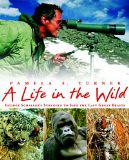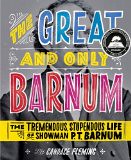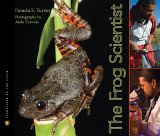
Once again, the Scientists in the Field series hits it out of the park.
Project Seahorse is a program that helps set up Marine Protected Areas off the coast of the Philippines. Seahorses are in trouble because there is a great demand for them-- dried seahorses are an important ingredient in traditional Chinese medicine and are also used for curios and knick-knacks. Live seahorses are very popular to use in aquariums, even though they are extremely hard to keep alive in captivity.
In addition to learning a lot about seahorses and coral reefs, Turner also shows why Project Seahorse is so successful as an organization.
The reason Project Seahorse works is because they work very closely with the communities who depend on the reefs for their livelihoods. By working closely with all of the players, they create very important buy-in, so everyone's on board with the project. One thing Project Seahorse works for isn't a complete ban on the seahorse trade, but a more sustainable one. Not only do they work with the fisherman, but also aquariums and Chinese medicine practitioners.
They also take a very interdisciplinary approach their conservation efforts. In addition to observing reef recovery by diving and counting and observing, the scientists also interview the fisherman to see if/how their catches are improving and work closely with them, not just for data, but so that they continue to support the project.
They hope that not only with the reef recover (and it's very much starting to) in the protected areas, but as it recovers, it spills out of the protected boundaries, bringing recovery to the unprotected areas as well (and the fisherman hope so, too.)
Also, the pictures are just FANTASTIC. Seahorses are weird little creatures and there are lots of cool pictures of them, but also of the other fish and life along the reef. Stunning. (My favorite was in the very back, of the weedy seadragon.)
As always, there is also a list for further reading, watching, and researching, as well as tips kids can do right now to help.
Another great book to show why this series is so awesome.
Round up is over at Write About Now. Be sure to check it out!
Book Provided by... my local library
Links to Amazon are an affiliate link. You can help support Biblio File by purchasing any item (not just the one linked to!) through these links. Read my full disclosure statement.




